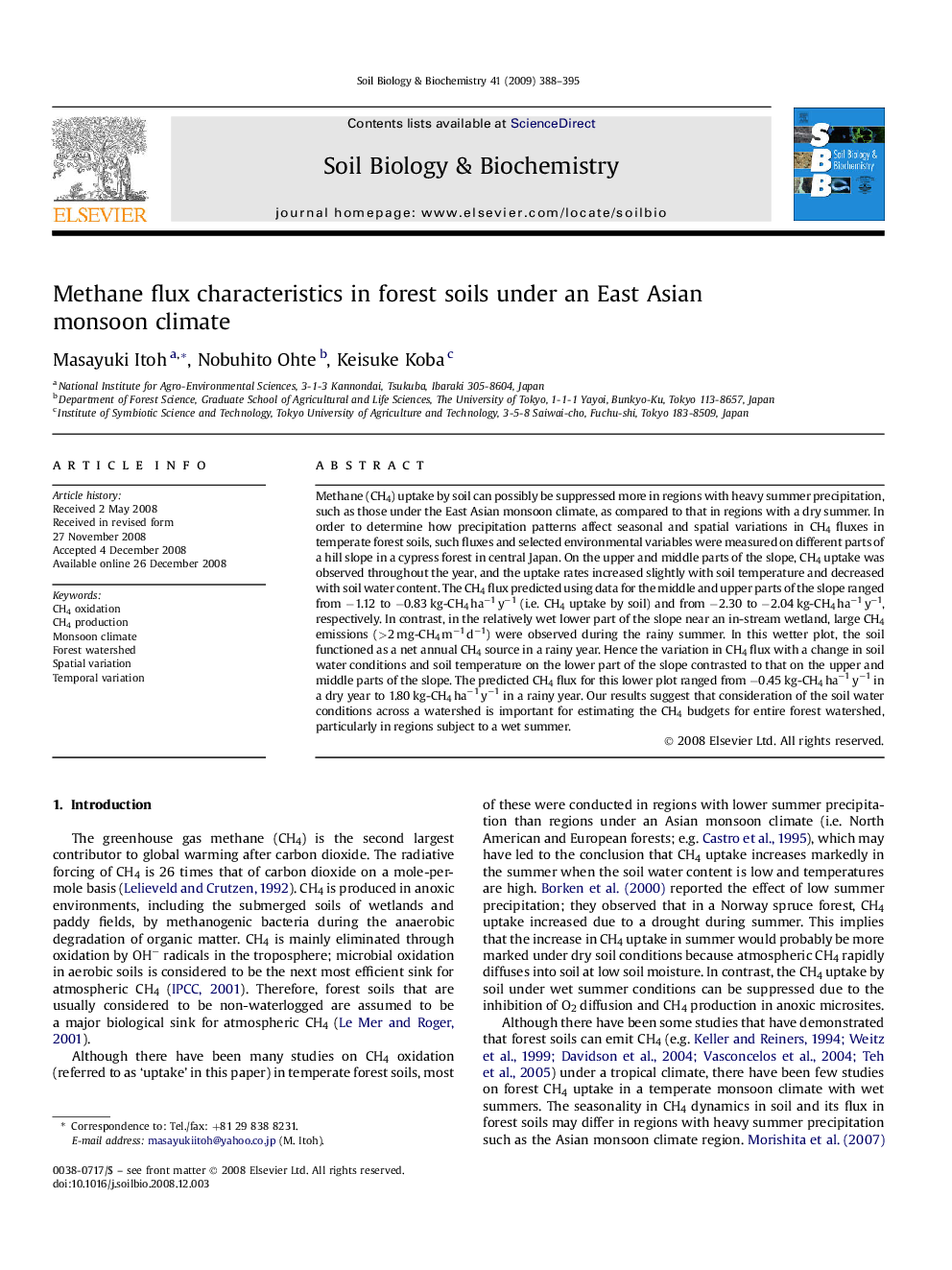| Article ID | Journal | Published Year | Pages | File Type |
|---|---|---|---|---|
| 2026141 | Soil Biology and Biochemistry | 2009 | 8 Pages |
Methane (CH4) uptake by soil can possibly be suppressed more in regions with heavy summer precipitation, such as those under the East Asian monsoon climate, as compared to that in regions with a dry summer. In order to determine how precipitation patterns affect seasonal and spatial variations in CH4 fluxes in temperate forest soils, such fluxes and selected environmental variables were measured on different parts of a hill slope in a cypress forest in central Japan. On the upper and middle parts of the slope, CH4 uptake was observed throughout the year, and the uptake rates increased slightly with soil temperature and decreased with soil water content. The CH4 flux predicted using data for the middle and upper parts of the slope ranged from −1.12 to −0.83 kg-CH4 ha−1 y−1 (i.e. CH4 uptake by soil) and from −2.30 to −2.04 kg-CH4 ha−1 y−1, respectively. In contrast, in the relatively wet lower part of the slope near an in-stream wetland, large CH4 emissions (>2 mg-CH4 m−1 d−1) were observed during the rainy summer. In this wetter plot, the soil functioned as a net annual CH4 source in a rainy year. Hence the variation in CH4 flux with a change in soil water conditions and soil temperature on the lower part of the slope contrasted to that on the upper and middle parts of the slope. The predicted CH4 flux for this lower plot ranged from −0.45 kg-CH4 ha−1 y−1 in a dry year to 1.80 kg-CH4 ha−1 y−1 in a rainy year. Our results suggest that consideration of the soil water conditions across a watershed is important for estimating the CH4 budgets for entire forest watershed, particularly in regions subject to a wet summer.
